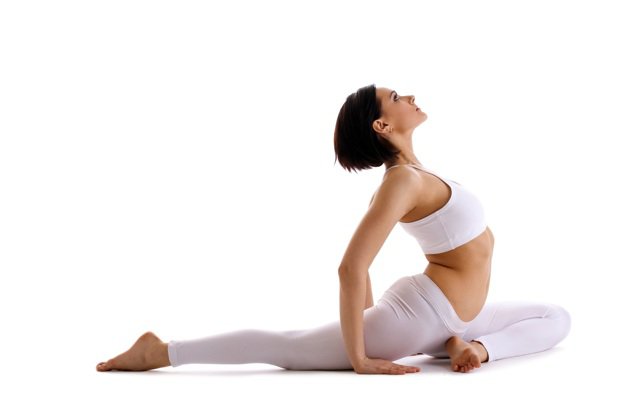Sleep is an essential part of life. Without it, you can’t concentrate, your mind feels cloudy, and it becomes hard to focus. The effects of sleeplessness can even affect you physically, as your fatigued muscles can’t keep up with your daily demands.

Mitigate these effects and get a good night’s sleep every night when you practice yoga before bed. Read on for the top six yoga poses for better sleep.
Inverted Relaxation
For the inverted pose called Viparita Karani (Legs-up-the-Wall Pose), you should lie down with your glutes flat against the wall and your legs straight up against it. Your upper body should be fully relaxed on the floor, perpendicular to your legs. Place your arms at your sides.
Rest in this position for about three minutes before transitioning to the next pose. If you don’t have a timer, stay in this position for 30 to 45 breaths. For added comfort, you can lay a blanket underneath your upper body.
Child’s Pose
Child’s pose is the quintessential resting pose in many yoga classes. It helps calm your mind and relieve tension in your body. Fold your legs underneath you, with your shins along the floor, and sit back on your heels. Ensuring that your feet are together and your knees are slightly apart, lean your upper body forward until your forehead rests on the ground. You can keep your arms by your sides or stretch your upper back by extending them straight in front of you.
Stay in this pose for about three minutes, or 30 to 45 breaths.
Happy Baby
One of the most relaxing poses, the Happy Baby relieves tension in your hips and lower back, which are often the culprits of your pain. Lying on your back, exhale and bend your knees into your belly. As you inhale, hold the outside of each foot with your hands and bring your knees up to your shoulders, opening them slightly wider than your torso.
Hold this pose for two minutes, or 20 to 35 breaths. If you experience discomfort in your legs or hips, use a belt instead of your hands to hold your feet in place.
Sleep Like the Dead
Because your body maintains an extremely neutral position in this pose, you can induce sleep mode in your body with Savasana (Corpse Pose). Lie on your back with your legs straight in front of your and your arms extended slightly away from your body. Instead of focusing on a specific pose, try to completely relax even the smallest parts of your body, including the wings of the nose, the root of your tongue, and the bridge between your eyebrows.
Remain in this pose for three minutes. If you’re practicing yoga regularly, use this pose for five minutes after every 30 minutes of practice.
Twisted Waist
While Siddhasana (Adept’s Pose) is very relaxing, a variation on the pose with rotation in the waist is also very soothing. Sitting on a blanket with your back straight, cross your ankles. As you inhale extend your upper body straight up before you exhale and place your left hand on the outside of your right knee. Inhale again and lengthen your back and then exhale and twist towards the right. Keep breathing and twisting for one minute on the first side. Return to your neutral Siddhasana pose and repeat the twisting motion on the left side.
Reclining Angel
Supta Baddha Konasana (Reclining Bound Angle Pose) is a pose that releases tension in your lower back, tailbone, and pelvis. Sitting on the ground, place a folded blanket or a bolster at the base of your sacrum. Bending your knees, place the soles of your feet together, letting your legs fall open naturally. Lay back on the bolster and support your head on a pillow.
Stay in this pose for two minutes, or 20 to 35 breaths.
Yoga’s Effectiveness
Much of the power behind yoga comes from its ability to release tension in the muscles. Some of the places where people hold the most tension include the lower back and the pelvis. Many of these yoga poses focus on stretching and relaxing these muscles, relieving pain and ensuring loose muscles. Incorporate aromatherapy with products from stores like YUNI Beauty into your practice to enhance the effects of your practice.

